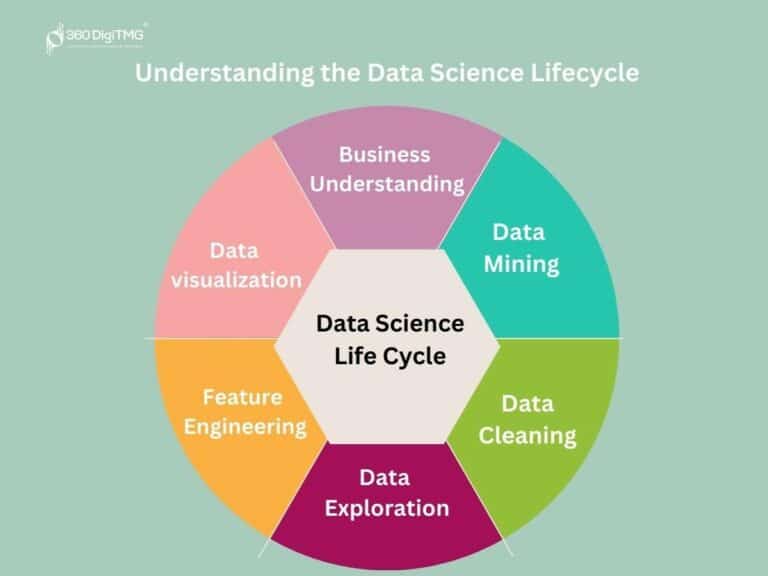Are you tired of manually testing your web applications and searching for a faster, more efficient solution? Look no further than Selenium! This open-source testing framework has revolutionized the world of automated web testing, allowing developers to quickly and easily test their applications across a variety of browsers and platforms.
Now here’s where it turns even more exciting – have you heard of LambdaTest? This digital experience testing platform takes Selenium to the next level, offering a cloud-based testing infrastructure that allows developers to run Selenium tests across 3,000+ real browsers and operating systems, all from a single platform. With LambdaTest, you can easily scale your testing efforts and ensure your web applications are performing flawlessly for all users, no matter what browser or device they’re using.
But how does Selenium work its magic? In this article, we’ll explore the different components of Selenium and dive into the inner workings of this powerful tool to understand how it can help you streamline your web development process. So, without further ado, let’s get started.
What is Selenium?
Selenium is a highly regarded test automation framework that is open-source. It facilitates the automation of website testing for web apps and websites on various operating systems and browsers. With Selenium, testers can use a range of programming languages, like Java, JavaScript, Python, C#, and more, to automate their website testing in their preferred language.
The Selenium framework enables testers to quickly execute test cycles by automating test cases repeatedly. Furthermore, when incorporated into the CI/CD pipeline, Selenium can help ensure a robust and error-free release deployment pipeline.
Working Process of Selenium
Selenium communicates with the web browser using the WebDriver interface. The WebDriver sends commands to the browser through its own driver, which translates those commands into browser-specific actions. Selenium supports multiple programming languages, as we discussed. So, you can write test scripts in any of these languages and execute them using Selenium.
You can use Selenium to automate a variety of web browser actions, such as opening a web page, clicking a button, filling out a form, scrolling, and navigating between pages. Selenium provides a range of tools for locating and interacting with web page elements, such as buttons, text fields, and links. You can use these tools to find elements based on their IDs, classes, tags, or other attributes.
Selenium can run tests in different browsers, such as Chrome, Firefox, Safari, and Internet Explorer. You can also run tests on different operating systems and devices, such as desktops, laptops, and mobile devices. Selenium integrates with other testing tools and frameworks, such as TestNG, JUnit, and Jenkins. You can use these tools to manage your tests, generate reports, and automate your testing workflow.
Who Uses Selenium?
Simply put, anyone who values the condition of their web application. The versatility of Selenium is a key factor in its widespread popularity. Individuals such as freelance developers, who need to carry out quick debugging tests, to UI engineers who run visual regression tests after integrating a new feature, can use Selenium to test their code/app for web development.
In an enterprise setting, QA engineers are responsible for testing with Selenium. They are in charge of scripting-focused and deterministic tests that maximize test coverage and accuracy, updating test suites for new versions of the project, and maintaining the test infrastructure from the Hub to the test-case library.
Their job includes creating comprehensive test suites to identify critical bugs and advising stakeholders about updating performance benchmarks for the project. Their ultimate aim is to achieve maximum test coverage and effectiveness, which improves overall productivity for engineers at work.
A Bit About Selenium Components
1. Selenium WebDriver
Selenium WebDriver, also known as Selenium 2.0, is a tool that executes test scripts through browser-specific drivers. It comprises an API, which ports test scripts written in various programming languages to Selenese (Selenium’s scripting language) through bindings, a library that houses the API and language-specific bindings, a driver that is an executable module that opens up a browser instance and runs the test script, and a framework that provides support libraries for integration with natural or programming language test frameworks.
To execute test scripts, the WebDriver protocol uses a local end (or “client”) that sends commands to a browser-specific driver, which then executes these commands on its browser instance. For example, if a test script calls for execution on Firefox and Chrome, the ChromeDriver will execute the test on Chrome, while the GeckoDriver will do the same on Firefox.
2. Selenium Grid
Selenium Grid is a server that can reduce the runtime of tests by executing multiple test scripts on numerous remote devices simultaneously. This is known as parallel testing. The main components of Selenium Grid include the ‘Hub’ and ‘Node.’ In simple terms, Hub is like a boss that tells each device what to do. The Node is like a worker that runs tests on a remote device like a phone or tablet.
When you want to run a test on a remote device, you write a test script and tell the Hub what device you want to use. In your test script, you define the ‘desired capabilities,’ such as the device, platform, browser, etc., of the node where the test will run.
The Hub receives this script and searches through registered nodes to uncover one that matches the desired qualifications and assigns the test to it for execution. It is important to note that while setting up the Grid is relatively straightforward, scaling, configuring, and maintaining its integrity can be resource-intensive. Therefore, it is essential to carefully consider adopting it.
3. Selenium IDE
Selenium IDE is a handy Chrome and Firefox plugin that can record and play out natural interactions in the browser. It can generate code in various programming languages, including C#, Java, Python, Ruby, and Selenese (Selenium’s own scripting language).
Testers can enable recording in the IDE and simulate a test scenario on the browser. The IDE then replays those interactions and flags any errors encountered during the replay in red. However, it’s essential to note that while the plugin is a useful tool for rapid prototyping, the code generated is typically too messy to be used in automation test scripts. Therefore, for more serious cross-browser testing, we recommend using Selenium WebDriver.
4. Selenium RC
Selenium Remote Control (RC) is a Java-based server that accepts browser commands via HTTP. With RC, it is possible to write automated tests for web applications in any programming language, which facilitates the integration of Selenium in existing unit test frameworks. To make test writing easier, the Selenium project offers client drivers for PHP, Python, Ruby, .NET, Perl, and Java. Additionally, the Java driver can be used with JavaScript through the Rhino engine.
To launch an HTML test case using Selenium RC, an instance of the Selenium RC server is required. This means that the port used for each parallel run must be different. However, for Java/PHP test cases, only one instance of Selenium RC needs to be running continuously.
Need for Selenium Automation Testing
Imagine having to manually test a web app’s signup page, ensuring it validates input strings and successfully registers a user on the latest versions of Chrome and Firefox on Windows 7. The manual tester must follow a sequence of steps, entering invalid and valid strings in each input field and checking if the input strings were validated against corresponding regexes and pre-existing values in the database. Then, they must check if the system database created a new userID for the user and mark the test as passed or failed accordingly.
This is a basic system test, but in reality, testers need to check all user workflows on the website for breakage on multiple OS-browser combinations to meet benchmarked compatibility standards. Depending on the thoroughness of the test cases and the number of manual testers, it may take hours to weeks to ensure the web app is fully functional.
However, modern developers and product teams cannot afford to allocate that much time for testing, nor can they compromise on the quality of the testing in a hurry to release. This is where Selenium automation testing comes in, providing a super-charged testing method powered by Selenium that can automate all these manual tests and execute them on multiple OS-browser combinations quickly and efficiently.
How Selenium Testing Boosts Agile Development?
Selenium Testing plays a crucial role in boosting Agile development. Agile is a development methodology that aims to continuously improve product design by starting with the simplest working version. The Agile workflow typically involves stakeholders agreeing on a basic design, breaking it down into smaller modules, and assigning each module to a cross-functional team of developers, designers, and Quality Assurance (QA) personnel.
Teams work in sprints to complete their modules within a specified time frame, and at the end of each iteration, finished modules are integrated, tested, and demonstrated to the stakeholders.
Testing automation is an essential part of the Agile process, with QAs running a series of unit and acceptance tests on modules from the early stages. Integration tests are performed on every iteration to ensure that individually coded modules don’t break when combined, and regression tests are required for each new iteration to prevent breaking the previous working iteration. It is vital to keep track of both the code and test cases to ensure that all iterations are well-documented. In fact, the concept of recurring testing is prevalent across all subcategories of Agile-based iterative development, including Continuous Integration/Continuous Deployment (CI/CD).
How Selenium Testing is Critical to Continuous Integration/Delivery (CI/CD)?
Selenium testing plays a crucial role in the Continuous Integration/Delivery (CI/CD) process, which aims to deliver new builds frequently and quickly while ensuring the project remains ready to ship at all times. With CI/CD, a developer integrates new code into the project, and an external CI server performs an integration test by building the source files with the new code. If the build is successful, the changes are packaged with the source files; if not, the team is notified.
CI engines like Jenkins or Bamboo display present and prior builds, logs of previous check-ins and their status, and any infrastructure or configuration changes, ensuring that deployment failures are caught early.
However, a successful build does not necessarily equate to a quality build, and that’s where automation testing with Selenium becomes crucial. Selenium automates functional, performance, and compatibility testing, providing developers with near-instant feedback for faster debugging and leaving them with more time to focus on coding business logic for newer versions or features.
Closing Thoughts
Selenium is the ultimate tool for automating web testing across various browsers and platforms. With its continued popularity, it’s safe to say that Selenium is here to stay. Whether you’re a software developer, data scientist, or just a curious web user, there’s plenty to discover and explore with Selenium. So why not dive in and witness what you can create with this powerful tool? And to unleash the full potential of Selenium, consider pairing it with LambdaTest.
Experience the difference that LambdaTest can make in maximizing your Selenium capabilities. Start your free trial today and see the results for yourself.












